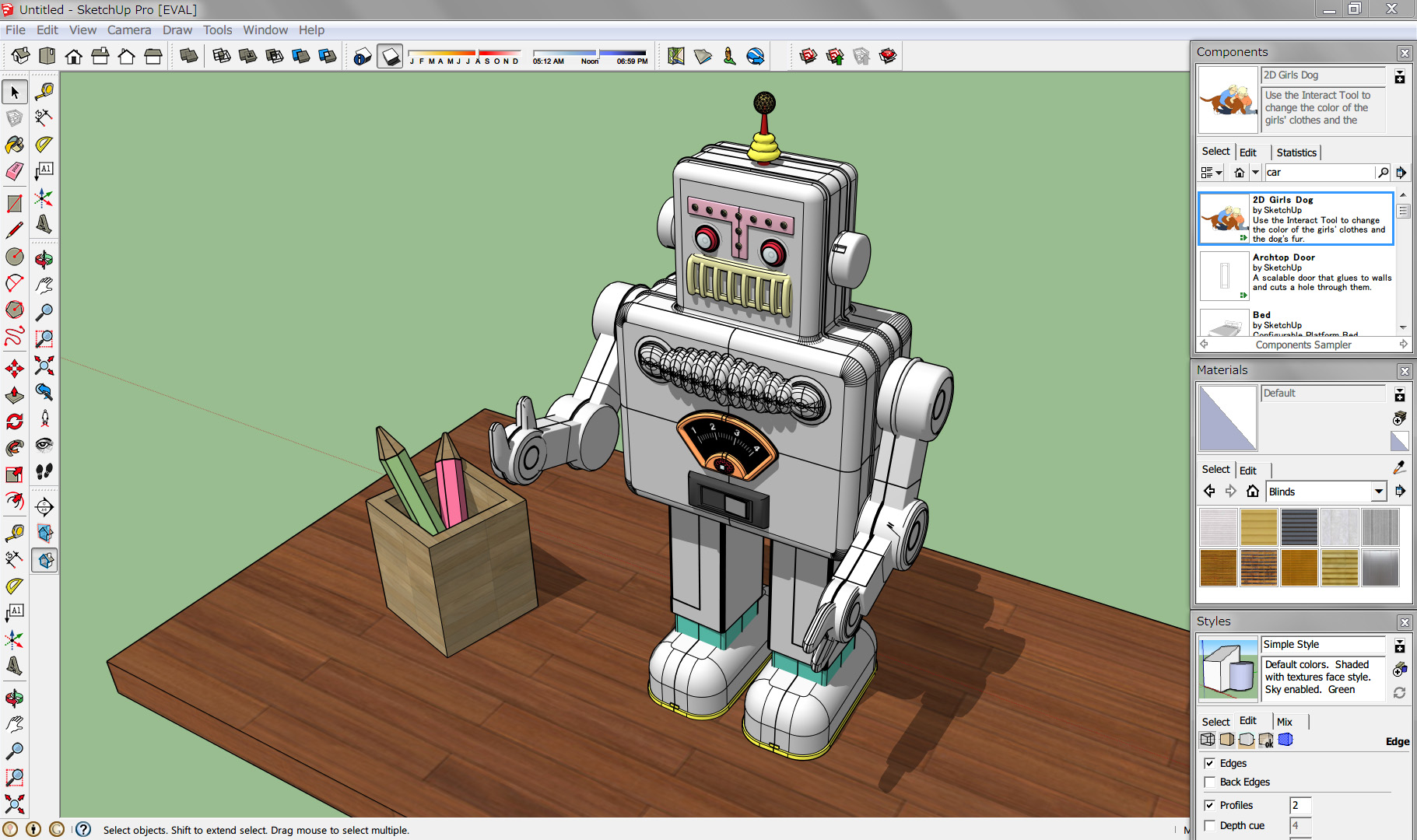
The thing that puts SketchUp over the top for this category is called the “Extension Warehouse.” I haven’t investigated this resource extensively yet, but from what I can see, the Extension Warehouse transforms SketchUp into a metaphorical “Swiss Army knife” of 3D design. (Can you tell which program was used to render this image? Answer: Vray can do this kind of work with either AutoCAD or SketchUp) 5. For this reason, I’m calling this category a tie. However, both AutoCAD and SketchUp need a program like Vray to create genuinely amazing photorealistic renderings. I consider SketchUp to be better for producing render-ready models, but that is because of its more straightforward UI. Since they can create the same final product with roughly the same amount of work, I’m calling it a tie. The final product produced by either AutoCAD or SketchUp will be a page layout with all construction details necessary to get the job done. I haven’t delved into the particulars of “Layout,” but I can see the gist of its capabilities.
#GOOGLE SKETCH UP SYSTEM REQUIREMENTS PROFESSIONAL#
So keep in mind that creating an utterly professional layout is a meticulous process, requiring that you add labels and symbols and hatches, etc.

When I first started using SketchUp, the only major problem it posed to me was the inability to make my model into a 2D plan on paper. The purpose of Layout is to produce professional-grade page layouts just like AutoCAD. However, a while ago, SketchUp created a new application called “Layout.” Layout isn’t available with all forms of SketchUp you need either Student, Pro, or Studio edition. LayoutsĪ few years ago, the winner here would have been AutoCAD by a landslide. 2) Push/Pull faces to make objects 3) Arrange objects to build models. Most of SketchUp’s functionality is summed up in a few fundamental principles 1) Draw shapes to make faces. Many of the SketchUp functions are intuitive for first-time users, so the learning curve is pretty easy. I have always found AutoCAD’s UI brilliant, but even I have to admit that SketchUp has a natural and straightforward UI. I am an AutoCAD fanboy because it has been a breadwinner program for me for many years. For architects and people developing models and construction plans, SketchUp + Layout (a powerful extension for SketchUp) is a mighty duo that allows you to create professional-grade construction drawings when you know what you’re doing.
#GOOGLE SKETCH UP SYSTEM REQUIREMENTS FREE#
I remember one time in class someone said, “Have you heard about SketchUp? It’s free and super-easy to use.”

I took a few CAD classes, and I recall trying to learn 3DS Max, hoping I could use it to represent my projects in 3D models. I first heard about SketchUp when I was in college for Landscape Architecture. If you want to know the history of these products, look on Wikipedia. SketchUp was initially Google SketchUp and was bought by a company named Trimble. If there’s an industry-standard way to represent something, AutoCAD can draft it. AutoCAD is versatile and capable of drafting in any of the fields I’ve listed. Heck! Your home went through this process.Ĭan you think of anything in a city that doesn’t require design and planning? Roadways, buildings, utilities, electrical schematics, sewers, graphics, household products, boats, vehicles, are all things that need to be designed.īefore AutoCAD, people had to draw all these things by hand. Almost everything in your house went through this process. Everything that is made these days is designed and drafted so a manufacturer or builder can produce it.


 0 kommentar(er)
0 kommentar(er)
